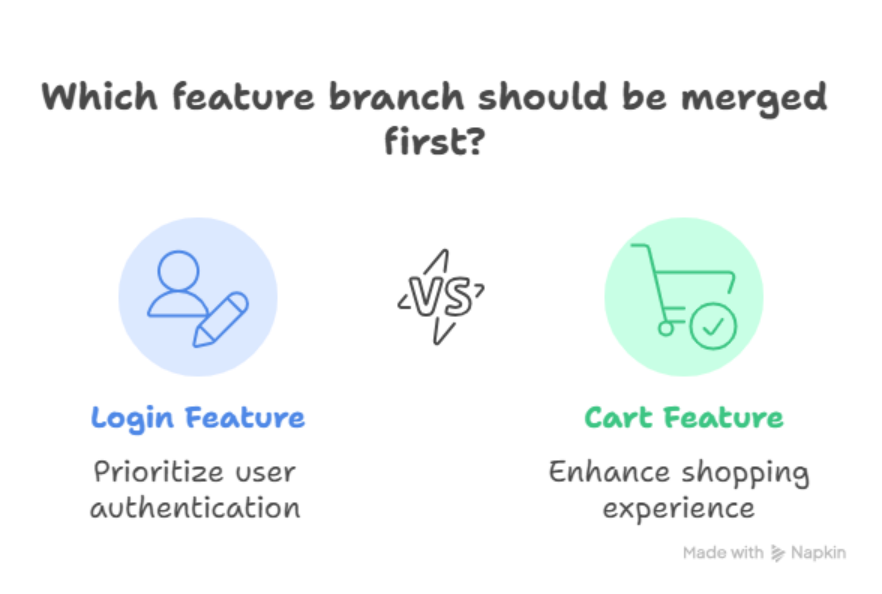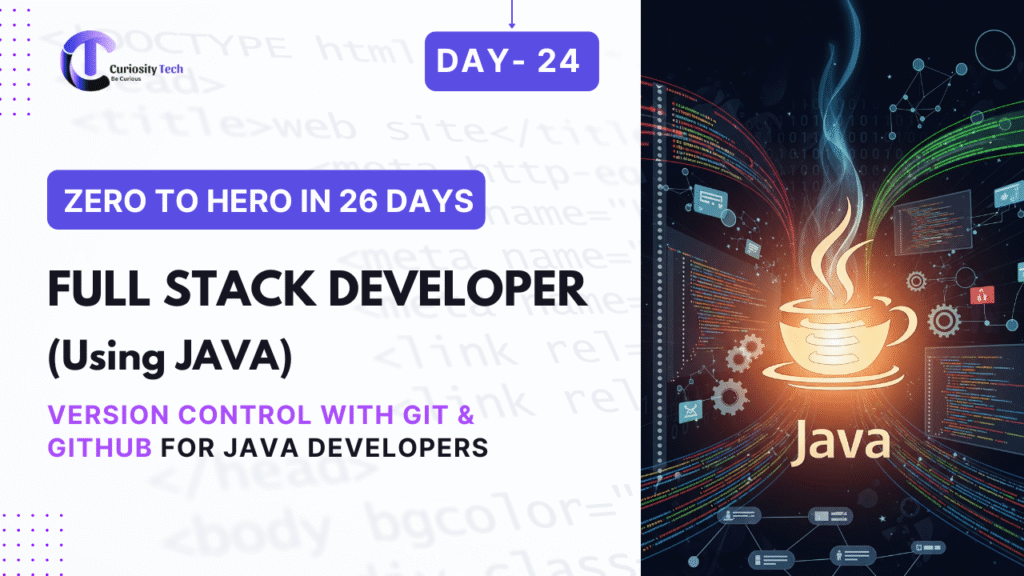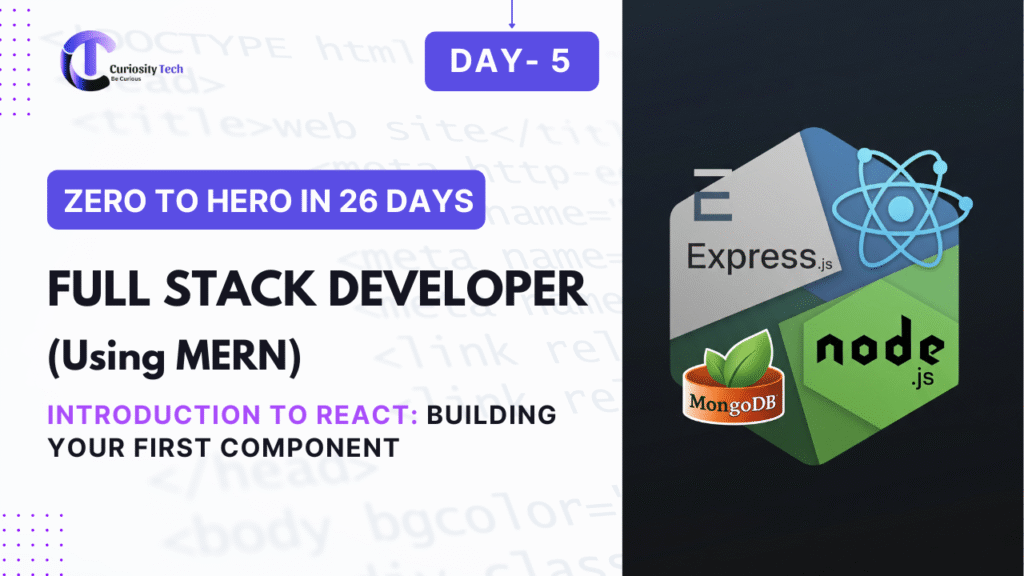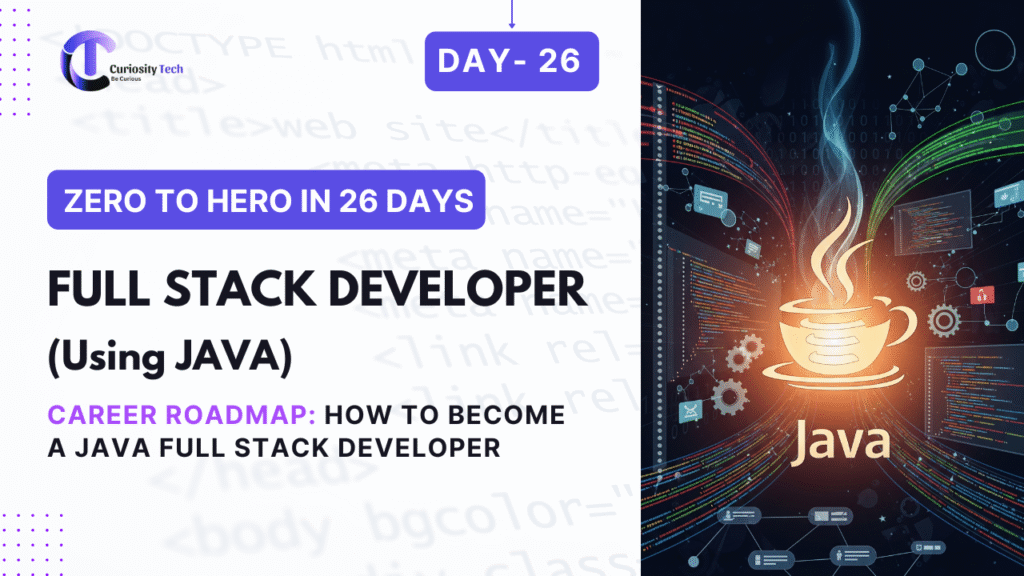Introduction
Version control is a fundamental skill for Java Full Stack Developers. Git, paired with GitHub, allows developers to track changes, collaborate with teams, and maintain a history of code efficiently. Proper version control is crucial for both solo projects and enterprise-level applications.
At CuriosityTech.in, developers learn to use Git and GitHub effectively for full stack projects, ensuring seamless collaboration, code safety, and professional workflows.
Why Version Control Matters
- Track Code Changes: Every modification is recorded with author, timestamp, and description.
- Collaboration: Multiple developers can work on the same codebase without conflicts.
- Backup & Recovery: Restore previous versions in case of errors.
- Professional Workflow: Version control is standard in software development teams and DevOps practices.
CuriosityTech.in emphasizes hands-on version control, teaching developers branching strategies, merge workflows, and conflict resolution.
Step 1: Setting Up Git
- Install Git: Git Official Website
- Configure user details:
git config –global user.name “Bhavesh Barange”
git config –global user.email “bhavesh@example.com”
- Verify installation:
git –version
Step 2: Basic Git Commands
| Command | Description |
| git init | Initialize a new repository |
| git add . | Stage all changes for commit |
| git commit -m “message” | Commit changes with a message |
| git status | Check current status of repository |
| git log | View commit history |
Example: Initialize & Commit a Project
cd MyJavaProject
git init
git add .
git commit -m “Initial commit: Setup Spring Boot project structure”
Step 3: GitHub Integration
- Create a repository on GitHub.
- Link local repository:
git remote add origin https://github.com/username/MyJavaProject.git
git branch -M main
git push -u origin main
- Verify push on GitHub to see project files online.
Step 4: Branching Strategy
Branching allows developers to work on new features or fixes independently.
Common Workflow:
- main – Production-ready code
- develop – Active development
- feature/* – Individual features
Example Commands:
git checkout -b feature/user-authentication
# Work on code…
git add .
git commit -m “Implemented JWT authentication”
git push origin feature/user-authentication
Step 5: Pull Requests & Collaboration
- Push feature branch to GitHub.
- Open a Pull Request to merge changes into develop or main.
- Perform code review and resolve conflicts if necessary.
- Merge approved changes.
Tip: Use Squash & Merge for clean commit history.
Step 6: Handling Conflicts
Conflicts occur when changes overlap. Resolve them manually:
git pull origin main
# Edit conflicting files
git add .
git commit -m “Resolved merge conflict in ProductService.java”
git push origin feature/branch-name
Step 7: Best Practices
- Commit frequently with meaningful messages.
- Use feature branches instead of working directly on main.
- Pull latest changes before starting work.
- Write descriptive Pull Requests.
- Tag releases for production deployment.
Step 8: Git Workflow Diagram

Description:
This workflow demonstrates team collaboration, feature branching, and deployment integration, ensuring code quality and smooth project management.
Integrating CuriosityTech Perspective
At CuriosityTech.in, learners practice real-world Git workflows, including branching, pull requests, conflict resolution, and CI/CD integration. Developers gain hands-on collaboration experience, preparing them for enterprise-level projects where version control is crucial.
Conclusion
Mastering Git and GitHub is essential for Java Full Stack Developers. Efficient version control enables collaboration, ensures code reliability, and integrates seamlessly with CI/CD pipelines. With CuriosityTech.in’s guidance, developers learn to manage code professionally, maintain clean histories, and collaborate effectively in team environments.



